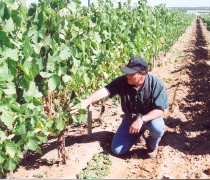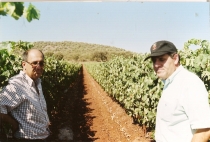Recognising the influence of viticultural technology on wine quality and how the two interact
From the outset PLANSEL has always tried to rise above the futility of comparing accepted practice with the merely mediocre. This is why PLANSEL organised workshops and seminars at which proponents of new technologies from economically advanced countries in the rest of the world made various presentations. It was a special kind of challenge to imagine something new and more effective without harking back to the supposedly tried and tested methods. This sometimes led to unexpected conflicts. The underlying desire was to arrive at a common wine‑‐centred approach among all stakeholders (public administration, oenologists, viticulturalists, grapevine nurserymen and wine producers and merchants) instead of waiting for decisions based on administrative criteria to come down from what were at the time autocratic ministerial bodies.
The initially experimental migration of traditionally regional varieties to the Alentejo, and later on to other regions, as well as the introduction of modern, high vineyard training systems, irrigation and green planting between vineyard rows are some of the many taboos PLANSEL. It was thus that prejudice against these measures, after fruitful controversy, led to progress. Two strategies made it easier for a paradigm shift among oenologists and winemakers to come about. The first was the systematic presentation of modern viticultural techniques. The second was activity centred around comparing base wines fermented in a controlled environment from varieties not normally produced in the area concerned (mostly from the north of Portugal) directly with traditionally‑‐produced regional wines. Portugal’s wine industry transformed itself within the space of one decade. These previously unknown indigenous and varietal wines were noticed by experts and journalists abroad too, and many of these wines won acclaim in the form of prizes at international competitions.



